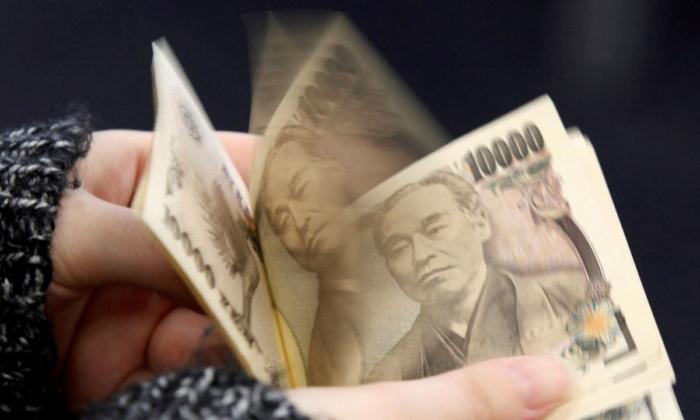SYDNEY/LONDON—The euro slid on Monday after activity data in key economies came in much softer than expected, giving markets a jolt at the start of a week packed with central bank meetings at which investors expect rate hikes in Europe and the United States.
The European common currency fell 0.4 percent to $1.1083, skidding after a quiet Asian session on PMI data that showed eurozone business activity shrank much more than expected in July.
The pound dropped after British activity data, but less dramatically and was last down 0.1 percent at $1.2839.
Simon Harvey, head of FX analysis at Monex Europe, said slower eurozone growth would reduce the likelihood of “the portfolio inflows needed to take the euro back to its pre Ukraine war ranges of $1.12 to $1.20.”
There is plenty more for investors to watch this week—the Federal Reserve concludes a meeting on Wednesday, followed by the European Central Bank (ECB) a day later and the Bank of Japan on Friday, as well as earnings from many heavyweight companies.
Investors expect both the ECB and Fed to raise rates by 25 basis points and the focus in both cases is on the signals they send around their September meetings. Softening inflation gauges might allow the Fed room to hint at a pause.
“The last week left markets believing in a soft-landing scenario for the U.S. markets where the (Fed) ends its hikes ... and then sees a steady drop in CPI without a recession,” said Bob Savage, head of markets strategy at BNY Mellon.
The Bank of Japan (BOJ) is the most likely of the three central banks to throw up a market-moving surprise, traders say, with a tweak to its yield curve control policy seen as a possibility.
The yen strengthened with the dollar down 0.47 percent at 141.2 yen, and the euro down 0.7 percent at 156.6 yen.
“If the BOJ adjusts its YCC programme, financial markets will likely take it as the start of a policy tightening cycle regardless of the BOJ’s rationale. Under such a scenario we consider USD/JPY and EUR/JPY can lose about 2–4 yen on the day,” analysts at Commonwealth Bank of Australia wrote.
The Swiss franc was steady at 0.8648 per dollar, and the dollar index was up 0.1 percent at 101.2.





